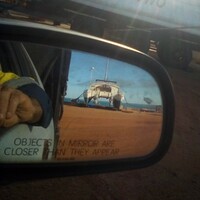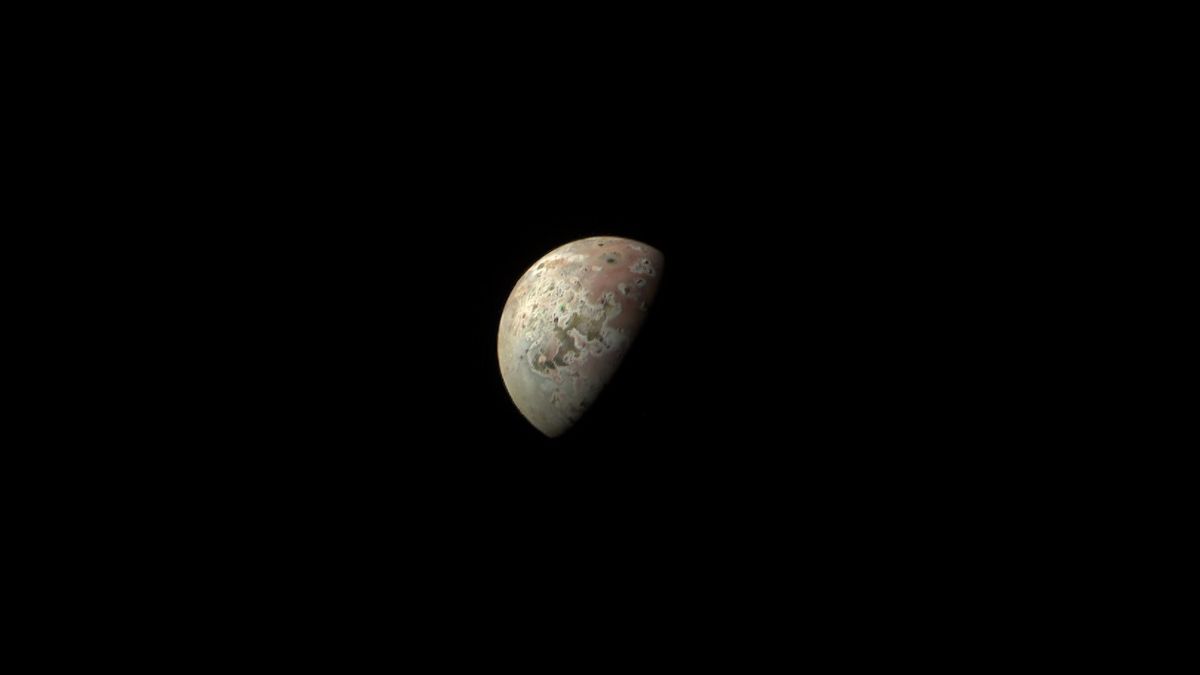Matt Williams - Juno Shares Stunning New Images of Jupiter’s Volcanic Moon Io:
https://www.universetoday.com/162752/juno-shares-stunning-new-images-of-jupiters-volcanic-moon-io/
#JunoCam #Juno #NASA #Io #Volcanism #Prometheus #VolcanicEruptions #VolundA #VolundB #Volund #Infrared #JIRAM #Astrogeology #Geology #PlanetaryScience #Astronomy
Circles
Posts
Robert Lea - See Jupiter's volcanic moon Io glow red-hot in incredible images from NASA's Juno probe:
https://www.space.com/nasa-juno-jupiter-io-volcanic-moon-images
#Juno #JunoCAM #JIRAM #Infrared #Io #Volcanoes #NASA #PlanetaryScience #Astronomy
NASA-JPL - NASA’s Juno Mission Getting Closer to Jupiter’s Moon Io:
https://www.jpl.nasa.gov/news/nasas-juno-mission-getting-closer-to-jupiters-moon-io
#Jupiter #Io #Volcanoes #Volcanism #Juno #NASA #SolarSystemScience #PlanetaryScience #Astronomy
Videos
Circles
Videos
Posts
Matt Williams - Juno Shares Stunning New Images of Jupiter’s Volcanic Moon Io:
https://www.universetoday.com/162752/juno-shares-stunning-new-images-of-jupiters-volcanic-moon-io/
#JunoCam #Juno #NASA #Io #Volcanism #Prometheus #VolcanicEruptions #VolundA #VolundB #Volund #Infrared #JIRAM #Astrogeology #Geology #PlanetaryScience #Astronomy
Robert Lea - See Jupiter's volcanic moon Io glow red-hot in incredible images from NASA's Juno probe:
https://www.space.com/nasa-juno-jupiter-io-volcanic-moon-images
#Juno #JunoCAM #JIRAM #Infrared #Io #Volcanoes #NASA #PlanetaryScience #Astronomy
NASA-JPL - NASA’s Juno Mission Getting Closer to Jupiter’s Moon Io:
https://www.jpl.nasa.gov/news/nasas-juno-mission-getting-closer-to-jupiters-moon-io
#Jupiter #Io #Volcanoes #Volcanism #Juno #NASA #SolarSystemScience #PlanetaryScience #Astronomy
At Home in Jesus
Bible in a Year:
Ruth 1–4
Luke 8:1–25
Remain in me, as I also remain in you.
Today's Scripture & Insight:
John 15:1–11
Several years ago, we brought home an adult black cat named Juno from the local animal shelter. Truthfully, I only wanted help thinning our mice population, but the rest of the family wanted a pet. The shelter gave us rigorous instructions on how to establish a feeding routine that first week so Juno would learn our house was his home, the place he belonged, and where he’d always have food and safety. This way, even if Juno might roam, he would always eventually come home.
If we don’t know our true home, we’re forever tempted to roam in vain search for goodness, love, and meaning. If we want to find our true life, however, Jesus said, “Abide in me” (John 15:4 esv). Biblical scholar Frederick Dale Bruner highlights how abide (like a similar word abode) evokes a sense of family and home. So Bruner translates Jesus’ words this way: “Stay at home in me.”
To drive this idea home, Jesus used the illustration of branches attached to a vine. Branches, if they want to live, must always stay at home, tenaciously fixed (abiding) where they belong.
There are many voices beckoning us with hollow promises to fix our problems or provide us some new “wisdom” or exhilarating future. But if we’re to truly live, we must remain in Jesus. We must stay at home.
By: Winn Collier
Jesus, I like to roam. I’m pulled in all kinds of directions. But I want to stay at home with You. You’re my life. Help me to abide in You. Amen.
Stars, Planets, Minor Planets and Moons: just arbitrary categories.
What makes a star?
"Well it shines it's own light." So does our Earth, you just can't see it because it's obscured by the crust. Of course, all that lava is shining underneath the crust even when it doesn't pop out at Mauna Loa or Iceland just as surely as a tree falls in a forest even when no one is there to see it. "Ah, if Lions could speak English, would it matter? After all, could we understand what they are talking about, English or no English, without really haven somewhat lived their life experience?"--Wittgenstein? But I totally digress.
Well, a star is made of gaseous plasma. We, and our planet: consensed matter. But your own eye tells you differently, not just Pierre-Marie Robitaille. Have you never seen a picture of the Sun?
The sun is extremely hot. So is the earth, but a short distance beneath the deepest mines, and certainly, at the core.
The sun is, said to be heated by fusion. Planets? By compression? Anyway, it's enough for it's own post--as if I know. . .
How about planets and minor planets and moons?
The new planet, now classified as a minor planet instead of as an asteroid, which just means, "space rock" in plain English: it is Ceres. Yet, it started out as a planet; if we consider classifications as valuable in any way, then Ceres was once a planet, and is again. Amen? But you know what's wrong with Vesta and Juno: basically they are as big as Ceres, but they are not round--just the shape of space rocks, or "rocks in space," except the size of a planet.
Then you know, Titan: atmosphere twice as thick as the Earth's. We quibble over the irrelevant detail that it circles Saturn rather than the Sun. Speaking of which, Saturn's sister planet Jupiter: does it or does it not give off a lot of radiation: kind of a cloud obscured fission version of a star or what?
Alright, as that Swedish Rumble channel owner says, "be good."








